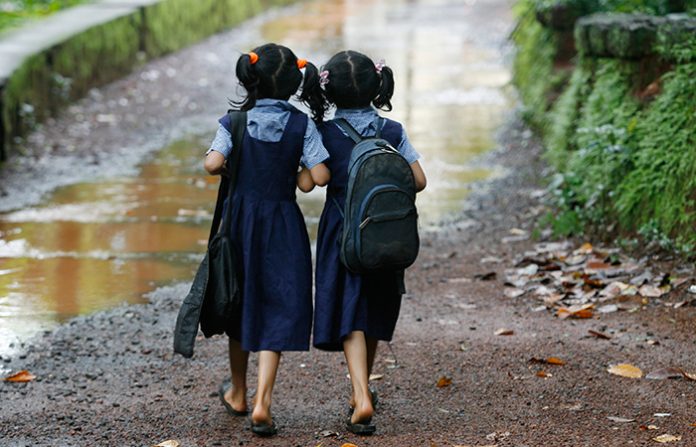By Siddhant Mohan, TwoCircles.net
Asian Center for Human Rights (ACHR) in its report, ‘Delhi: Disabling the Girl Child?‘ has stated that there is little seriousness on the part of the Delhi Government to address female foeticide leading to skewed sex ratio of 871 girls per 1000 boy as per 2011 census. As per the Sex Ratio at Birth, the sex ratio is all set to drastically fall below according to the 2011 census.
“The failure to launch the Mukhbir scheme to award those helping exposing those indulging in sex selection despite the announcement in October 2016 exposes the lack of seriousness of the Delhi Government on the issue.” said Paritosh Chakma, Director of the Asian Center for Human Rights.
The report stated that although 38 cases of foeticide were registered in Delhi during 2005 to 2014, only one conviction under the PC&PNDT Act took place from 2009 to September 2014. After the interventions of the Supreme Court in Voluntary Health Association of Punjab case, six more convictions took place in 2015 but thereafter the cases are not being followed. On the other hand, in 2014 alone, the Health department cancelled registrations of 43 radiologists and clinics and sealed 11 ultrasonography machines for conducting sex determination of fetuses.
“There is huge gap between actual number of offences committed under the PC&PNDT Act, the number of cases registered and extremely low rate of convictions. Instead of launching the Mukhbir Scheme or surprise investigation, the Delhi Government issued ludicrous show cause notices to 89 hospitals and nursing homes whose sex ratio at birth ranged from 285:1000 (Female:Male) to 788:1000 during 2014-2015. Will any institution self-incriminate in their responses?” asked Mr Chakma.
Notably, India enacted the Pre-natal Diagnostic Techniques (Regulation and Prevention of Misuse) Act, 1994 (PNDT Act) to address sex selective abortion. The PNDT Act has since been amended to make it more comprehensive and keeping in view the emerging technologies for selection of sex before and after conception and problems faced in the working of implementation of the Act and certain directions of Supreme Court. The amended Act of 2002 was renamed as “Preconception and Pre-Natal Diagnostic Techniques (Prohibition of Sex Selection) Act, 1994” (PC&PNDT Act).
Moreover, the Delhi Government is also seem failed in keeping track of genetic counseling center/ genetic clinic/ genetic laboratory etc registered under the PC&PNDT Act. Department of Health and Family Welfare of the Government of NCT of Delhi in its website stated that as on 5 November 2016 there were 1,553 registered centers functioning in Delhi including 97 in Central district, 137 in East district, 92 in New Delhi district, 105 in North district, 55 in North East district, 166 in North West, 141 in Shahdara district, 176 in South district, 194 in South East district, 99 in South West district and 291 in West district.
However, as Civil Society Report Card on PC&PNDT Act ‘Girl Count’ reports, the number of centers inspected every year is much less than the number of registered centers which suggested that inspection of all the centers was not being carried out.
Only 602 centers were inspected against total 1,605 registered centers during the 2011-12; 754 centers were inspected against 1,525 registered centers during 2012-13; 448 centers were inspected against 1588 registered centers in 2013-14, and only 640 centers were inspected against 1,554 registered centers during financial year 2014-15.
The Ladli Scheme, the main programme of the Government of NCT of Delhi for retention of the girl child, too has failed have the desired impact. The scheme was launched without having data of intended beneficiaries to be covered under the scheme and without fixing any annual target, financial or physical and without identifying the roles of stakeholders.
The primary targets of the Ladli Scheme are the socially and economically backward sections of society i.e. those below the poverty line but Delhi having 90 percent of the population Above Poverty Line (APL) families, about 90 percent of the population are indeed excluded from the Ladli scheme.
Further, the requirement of renewal of the scheme at each milestone i.e. at the time of birth and admissions in different classes i.e. Class I, VI, IX, X and XII had been found to be so cumbersome that about 42 percent of beneficiary girls i.e. 52,700 girls were dropped from the Ladli Scheme due to non-renewal of their cases at different stages between 2010 to 2012. Further, out of 73,108 cases, about 43 percent of beneficiaries as the Government of Delhi failed to finalize their maturity claims. The Government of Delhi failed to remove these difficulties as on date.
ACHR urged the Delhi Government to revise the Delhi Ladli Scheme to increase the amount for post birth benefits, expand the coverage of the Delhi Ladli Scheme to include all girl children of Delhi irrespective of income of their parents or place of birth, restore the benefits of the Delhi Ladli Scheme to all beneficiaries including the 52,700 cases identified by the Comptroller and Auditor General (CAG) during 2010-11 to 2011-12 which were dropped from the Delhi Ladli Scheme due to non-renewal of their cases at different stages.
ACHR also urged the Government of Delhi to establish the PC&PNDT Bureau of Investigation under the Department of Health and Family Welfare to assist the appropriate authorities for effective implementation of the PC&PNDT Act and launch a Mukhbir Yojana to reward those providing information. Specific allowance to the decoys and Mukhbirs has been also asked, who attend each hearing during the trials, with the best possible measure of assuring their anonymity.


